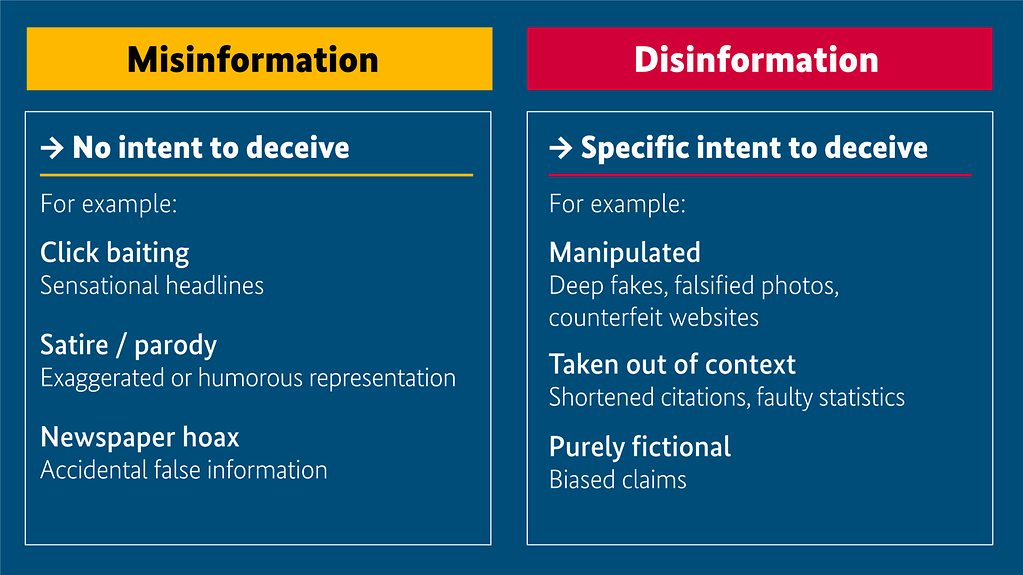Definition
What is the difference between misinformation and disinformation? And when does false news become dangerous? An introduction to a complex problem.
2 Min. Lesedauer

What is disinformation?
Foto: Bundesregierung
There has always been fake news. If incorrect information is circulated unintentionally then it is not dangerous. In everyday language, this could be a fake newspaper report or misinformation. Some hoax news can even be funny. It is so exaggerated and pointed that it is easily recognisable as what it is intended to be: satire.
Misleading and incorrect information becomes dangerous, however, when its objective is to deliberately deceive or influence people and it is distributed in a targeted manner. This is then called disinformation. The intention behind it is therefore the essential difference between disinformation and fake news.
Disinformation can be deceptively real
It is not easy to identify targeted disinformation for what it is: sometimes things are completely made up, sometimes intentionally taken out of context, exaggerated or with essential information omitted, all giving a false impression. And it does not always involve text: images and videos are now also increasingly easy to manipulate (so-called deep fakes). There are also attempts to portray reality in a fundamentally distorted manner – for example, by taking figures or quotations out of context, presenting a minority opinion as a majority one or by artificially manipulating the scope of individual articles.
Recently there have been targeted disinformation campaigns originating from abroad. Right-wing extremist groups are also using the coronavirus pandemic in order to spread conspiracy theories. This type of disinformation is dangerous because its objective is to divide our society. Its aim is to cause damage, intensify existing conflicts and debates, undermine trust in state-run institutions and stir up anger and emotions in general.
If illegitimate methods of influence are deployed from abroad, without declaring war, this is described as a hybrid threat. Such threats may also include disinformation campaigns.
Each and every one of us can do something to combat disinformation
Disinformation is spread much more quickly and uncontrollably online than it was in the analogue age. On social media, everything can be forwarded, liked and commented on within seconds. And it is so much easier and cheaper for individuals to spread disinformation themselves: almost everyone now has a social media account and therefore has the opportunity (at least in theory) to create disinformation and make it accessible to a broad public.
It is all the more important therefore to avoid contributing to the spread of misleading information by forwarding it without thinking. These three steps will help you recognise disinformation.
Deputy government spokesperson Ulrike Demmer spoke with blogger Louisa Dellert about fake news and disinformation in media and communications. Here is the full interview (German).